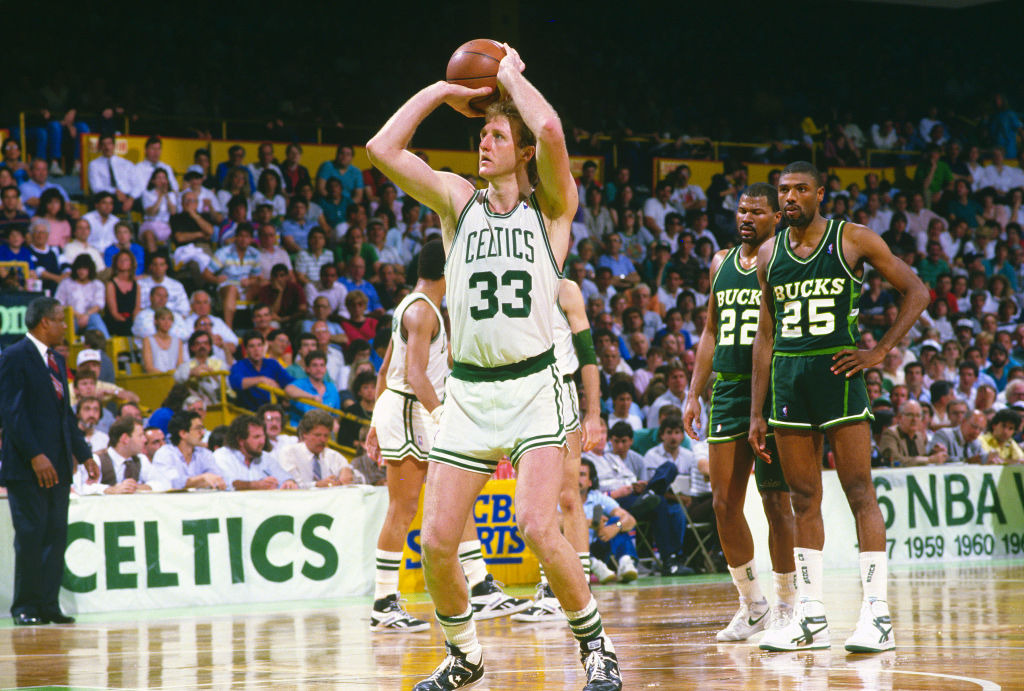
The Larry Bird Rule is a stipulation in the National Basketball Association (NBA) collective bargaining agreement that allows teams to exceed their salary cap in order to re-sign their own free agents. It was instituted in the summer of 2005 and has been updated several times since then, most recently in 2017. The rule is named after Hall of Famer Larry Bird, who played his entire career with the Boston Celtics and was instrumental in negotiating the original rule into the collective bargaining agreement.
The Larry Bird Rule gives teams an opportunity to retain their best players while staying within the limits of the salary cap. This offers them more flexibility when it comes to signing players and helps maintain competitive balance throughout the league. However, some have criticized the rule for giving certain teams an unfair advantage by allowing them to spend more than other teams on player salaries. Despite these criticisms, the Larry Bird Rule remains an important part of the NBA’s rules and regulations and continues to be a major factor in how teams construct their rosters.
In this article, we will take a closer look at the history of the Larry Bird Rule, how it works today, and why it remains so important for NBA teams. We will also examine how changes to the rule have affected player contracts and team salary caps over time.
History of the Larry Bird Rule
The Larry Bird Rule was adopted by the NBA in 1984, when it was included as part of the league’s collective bargaining agreement. The rule was named after Hall of Fame forward Larry Bird, who played his entire career with the Boston Celtics and was instrumental in negotiating its inclusion into the agreement. The purpose of the rule is to allow teams to exceed their salary cap in order to re-sign their own free agents. Under the rule, teams can offer players up to a maximum of five years in length and 35% of their salary cap space.
When the Larry Bird Rule was first adopted, it allowed teams to re-sign their own unrestricted free agents without having to worry about salary cap restrictions. This gave teams more freedom to keep their best players and helped maintain competitive balance throughout the league. However, some people criticized the rule for giving certain teams an unfair advantage by allowing them to spend more than other teams on player salaries. In response, the NBA has made several changes and updates to the rule over time, most recently in 2017.

One of the major changes made to the Larry Bird Rule was increasing the maximum contract length from five years to six years for certain players who have been with their team for six or more seasons. This allows teams to offer longer contracts while still staying within their salary cap limits, which helps keep veteran players with their original teams. Additionally, in 2017, a new “supermax” exception was added that allows teams to offer even larger contracts (up to 45% of the salary cap) if they meet certain criteria.
How the Larry Bird Exception Works in the NBA Today
Today, the Larry Bird Rule remains an important part of how NBA teams construct their rosters and manage their salary caps. It provides teams with more flexibility when it comes to signing players and helps maintain competitive balance throughout the league. However, some people still criticize it for giving certain teams an unfair advantage by allowing them to spend more than other teams on player salaries.
The Larry Bird Rights had a major impact on how teams construct their rosters and manage their salary caps. It gives teams an opportunity to retain their best players while still staying within the limits of the salary cap. This helps maintain competitive balance throughout the league, as teams are not able to outbid each other for players in the free agency. Additionally, it gives veteran players more leverage when negotiating contracts, as they can now demand longer-term deals that keep them with their original team.

The rule also affects player contracts and team salary caps in other ways. The maximum contract length allowed under the Larry Bird Rule (five or six years depending on certain criteria) is often used by teams as a bargaining chip when negotiating with a free agent. Additionally, the “supermax” exception allows teams to offer even larger contracts (up to 45% of the salary cap) to certain players who meet certain criteria, further increasing their leverage during negotiations.
Finally, the Larry Bird Rule has had an effect on team spending habits. Teams often use the rule to re-sign their best players and avoid going over the salary cap limit, while also offering larger salaries than they would be able to pay without it. This has resulted in some teams spending more money than others on player salaries and has caused some critics to argue that it gives certain teams an unfair advantage over others.
Conclusion
In conclusion, the Larry Bird Rule is an important part of the NBA’s collective bargaining agreement that allows teams to exceed their salary cap in order to re-sign their own free agents. The rule has been updated several times since its adoption in 1984, most recently in 2017, and it continues to be a major factor in how teams construct their rosters and manage their salary caps.
It provides teams with more flexibility when negotiating contracts and helps maintain competitive balance throughout the league. However, some people still criticize it for giving certain teams an unfair advantage by allowing them to spend more than other teams on player salaries. Ultimately, the Larry Bird Rule remains an important part of today’s NBA and will continue to be a major factor in how teams manage their roster and salary cap.





